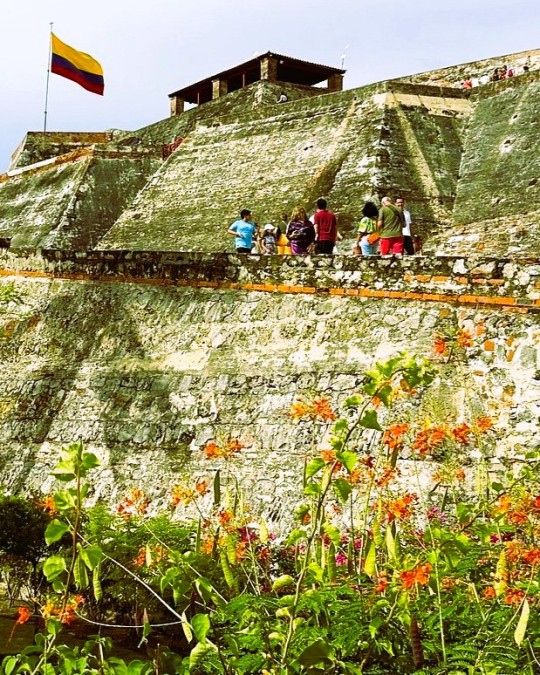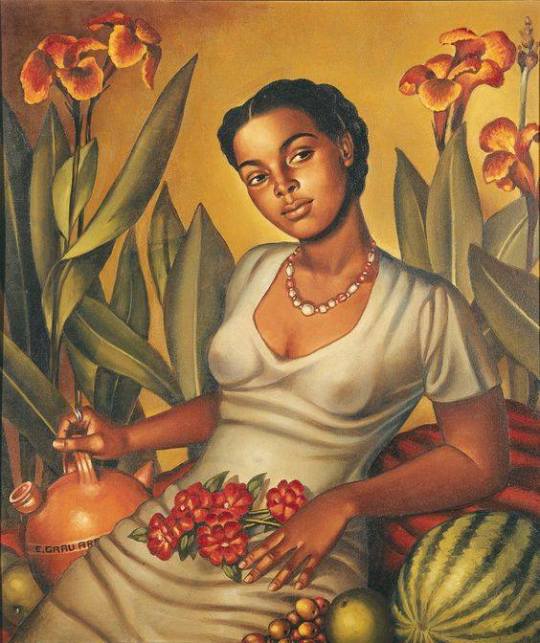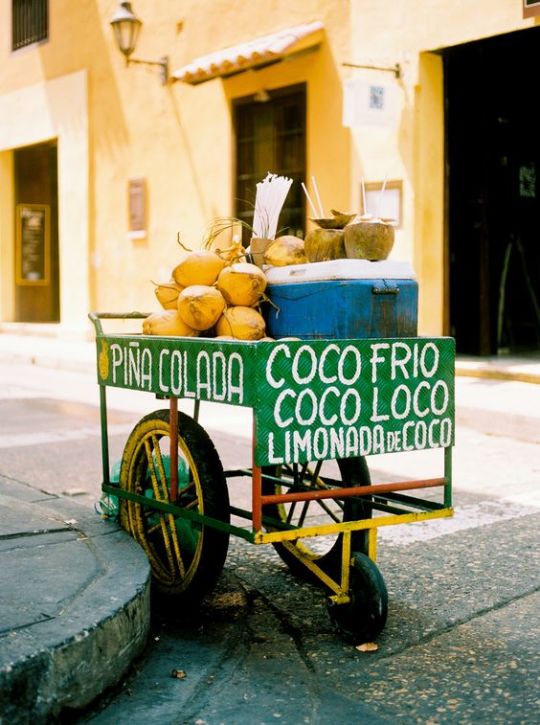☆⋆。𖦹°‧★Exploring the vibrant streets, golden beaches, and rich culture of Cartagena de Indias, one adventure at a time.☆⋆。𖦹°‧★
Don't wanna be here? Send us removal request.
Text

San Felipe de Barajas’s fortress, Cartagena, Colombia: The Castillo San Felipe de Barajas is a fortress in the city of Cartagena, Colombia. The castle was built in 1536 and is located on the Hill of San Lázaro in a strategic location, dominating approaches to the city by land or sea. It was originally known as the Castillo de San Lázaro. Wikipedia
98 notes
·
View notes
Text

Cartagena de Indias, Colombia: Cartagena known since the colonial era as Cartagena de Indias is a city and one of the major ports on the northern coast of Colombia in the Caribbean Coast Region, along the Caribbean sea. Cartagena's past role as a link in the route to the West Indies provides it with important historical value for world exploration and preservation of heritage from the great commercial maritime routes. Wikipedia
147 notes
·
View notes
Text
Vulindlela, the song that went famous overseas, specially here at Cartagena.
Cartagena is undoubtedly enriched by its Afro heritage, notably portrayed in the music. It is common for locals to hear a genre we call Champeta, regardless of whether the song is from another country, or even if it is in another language, Cartagena people are fond of these songs as you can hear them in every neighborhood at a Sunday morning.
⋆。𖦹°⭒˚。⋆⋆。𖦹°⭒˚。⋆
Vulindlela can be loosely translated from the Zulu language as an instruction to “make way” “clear the way” or, if you prefer, “open the gates”. The song talks about making way for the groom (and the bride) at their wedding. In 1997, South Africa was emerging from the racist system of apartheid and was celebrating its own “wedding” behind the racial barriers following the democratic elections of 1994.
𖦹
Open the gates Miss Gossip My Baby boy Is getting married today - Brenda Fassie - Vulindlela (translated to english by KJM Elevated Energy)
𖦹
3 notes
·
View notes
Text

⋆。𖦹°⭒˚。⋆Cartagena and it's beautiful beaches ⋆。𖦹°⭒˚。⋆
Then on the beach, without a cast net, I will fish you On the sand of Cartagena I will kiss your brown skin
1 note
·
View note
Text

Mulata Cartagenera, de Enrique Grau Araújo (1940)
358 notes
·
View notes
Text
Character of the Day
Gabriel García Márquez
The Magic Realist Who Found Inspiration in Cartagena ‿‿‿‿‿‿‿‿‿‿‿‿

Few authors have captured the essence of Latin America as vividly as Gabriel García Márquez. Known as the father of Magical Realism, Realismo Mágico, this Nobel Prize-winning writer found inspiration in Cartagena de Indias, a city that deeply influenced his life and work. In this article, we explore the life of 'Gabo,' his connection to Cartagena, and his everlasting impact on literature.
‿‿‿‿‿‿‿‿‿‿‿‿
Early Life and Career
Gabriel García Márquez was born on March 6, 1927, in Aracataca, Colombia. He grew up listening to his grandmother’s enchanting stories, which would later inspire the magical realism in his novels.
After studying law, García Márquez pursued journalism, where he honed his skills as a storyteller and developed a passion for highlighting social and political realities.
Gabo and Cartagena
In the 1940s, García Márquez moved to Cartagena, where he worked as a journalist. The city’s vibrant streets, colonial architecture, and rich history left an indelible mark on his imagination.
Cartagena’s Caribbean culture is beautifully reflected in his works, especially in Love in the Time of Cholera, which captures the essence of love and longing set against the city’s backdrop.
“There is no greater glory than to die for love.” Gabriel García Márquez, Love in the Time of Cholera
His masterpiece, One Hundred Years of Solitude, published in 1967, transformed literature and introduced the world to the genre of Magical Realism.

His most famous creation is getting a series adaptation, showcasing how his stories transcend time
✰In 1982, García Márquez was awarded the Nobel Prize in Literature, becoming a global icon and a source of pride for Colombia✰
Gabriel García Márquez’s life and works transcend borders and time. His stories, deeply rooted in Colombian culture, continue to inspire readers around the world. Cartagena was not just a home for Gabo—it was a muse that brought his magical worlds to life.
1 note
·
View note
Text

Cartagena Aviary
Did you know that you can meet near 170 bird species in the National Aviary?
─── ⋆⋅☆⋅⋆ ──
Just 50 minutes from the center of Cartagena de Indias on Barú Island, you will find the National Aviary. There, you will get fascinated by Colombia's diversity in bird species. With a collection of nearly 1700 birds that are exhibit in a very similar representation of their natural habit.
There you will find peacocks, eagles, woodpeckers, flamingos and lots of endemic species

Through ecological trails you can enjoy three ecosystem environments and 22 exhibits divided into large immersion aviaries, radial aviaries, swamps and lakes. These are different landscape, plant and water environments, which allow you to appreciate a great diversity of bird species.
The aviary has a spectacle where they show the skills of diverse birds in flight, which is presented twice a day, the first at 11:00 am and the second show at 3:00 pm. So, if you are planning to go to the National Aviary and want to see these majestic birds in action, keep this schedule in mind!
1 note
·
View note
Text

⋆。𖦹°⭒˚。⋆ Remember that your well-being is the most important thing⋆。𖦹°⭒˚。⋆
1 note
·
View note
Text
Preserving the Charm of Cartagena: Should Tourism Be Limited?

Cartagena de Indias, with its vibrant streets, colonial architecture, and rich history, is a jewel of Colombia and the Caribbean. However, the booming tourism industry has sparked a heated debate: is it time to limit tourism to protect the city’s cultural heritage? While tourism brings undeniable economic benefits, it also poses significant risks to Cartagena’s identity and local life.
The Good Side of Tourism
Cartagena is a touristic city, so the economy is driven by tourism. Hotel, restaurants, tour operators generate thousands of jobs for the locals, reducing the unemployment rate in the city.
Tourism shines an international spotlight on Cartagena, promoting Colombian culture, rich in their afro heritage, and history to the world, changing the bad perception of the country overseas.
Events like weddings and international festivals, hosted in iconic locations like the Ciudad Amurallada, highlight Cartagena’s beauty and bring additional income.

Murallas Sector El Cabrero
The Dark Side of Tourism: The Hidden Costs
The influx of visitors have led to the overcrowding of historic sites, causing wear and tear on Cartagena's valuable colonial architecture.
Locals, specially those who live in historical neighborhoods like Getsemaní, are being pushed out of the city center as property prices and taxes skyrocket due to the gentrification of the city.
The traditional lifestyle is being disrupted, with noise, pollution, and commercialization altering the charm of downtown neighborhoods.

Cartagena’s charm lies in its ability to blend history and cultural Tourism has the power to enhance this magic, but only if managed wisely. Limiting tourism may seem like the quickest solution, but sustainable practices offer a more balanced approach, preserving Cartagena’s heritage for generations to come while maintaining its position as a top destination in the world.
0 notes
Text
Remembering is easy for those who have memory. Forgetting is hard for those who have a heart
─ Gabriel García Marquez
1 note
·
View note
Text

― Gabriel García Márquez, Chronicle of a Death Foretold (translated by Gregory Rabassa)
880 notes
·
View notes
Text

Dusk darkens a block near the white-trimmed cathedral in the heart of Cartagena, Colombia. The Spanish conquistador, Pedro de Heredia, founded this city on the Caribbean in 1533. photo: D. Louis Mazzatenta
261 notes
·
View notes
Text
𖦹ׂHOW TO MAKE A TRIP TO... 101 𖦹ׂ
How to get from Cartagena to the Isle of Enchantment: Your guide to an unforgettable getaway
𓆝 𓆟 𓆞 𓆝 𓆟
youtube
Cartagena, is the perfect starting point to explore the paradisiacal Rosario Islands, an archipelago known for its crystal-clear waters and vibrant marine life.
Among them, Isla del Encanto stands out as an ideal destination to relax, enjoy nature and live an unforgettable Caribbean experience.

If you are planning your visit, here's how to get there and what to expect along the way ˙ᵕ˙
𖦹. Plan your trip in advance
Isla del Encanto is about 50 minutes by speedboat from La Bodeguita Pier in Cartagena. To ensure a smooth experience, I recommend you book your transportation and any tour packages in advance, especially in high season.
★The most reliable tour operators offer morning departures, usually between 8:00 a.m. and 9:00 a.m., so you can make the most of your day in the island★
𖦹. Departure from La Bodeguita pier
The trip begins at La Bodeguita Pier, located near the historic center of Cartagena. Before boarding, you will pay a small entrance fee to the Corales del Rosario National Natural Park, which helps conserve this protected marine ecosystem 𓇼 🌊 🐚
Along the way, you will enjoy spectacular views of the Caribbean. Tour operators usually provide life jackets and guarantee a safe and comfortable trip.
𖦹. Arrival at Isla del Encanto
Upon disembarking, you will be greeted by typical Caribbean hospitality. The Island of Enchantment is known for its excellent infrastructure, which combines comfort and respect for the natural environment.
𓆝 𓆟 𓆞 𓆝 𓆟
0 notes
Text
Recommendation of the day! ˙ᵕ˙
──────────── ⋆⋅☆⋅⋆ ───────────
Museo del Oro
‿‿‿‿‿‿‿‿‿‿‿‿
The Zenú Gold Museum, located in the emblematic Plaza de Bolívar, is a space dedicated to preserving and telling the story of the indigenous peoples who inhabited the Colombian Caribbean region. This free museum houses an impressive collection of pre-Colombian goldsmith pieces, pottery and tools that showcase the skill and knowledge of the Zenú culture.
One fascinating aspect is the system of hydraulic canals that the Zenú developed more than 2,000 years ago to control flooding in their territories. The museum details how these communities lived in harmony with their natural environment, leaving an invaluable legacy for the region
Visiting this place is not only a journey through the past, but an opportunity to appreciate the cultural richness and resilience of the native peoples.
‿‿‿‿‿‿‿‿‿‿‿‿
I had the opportunity to visit this museum on a saturday! (it is free every saturday ദ്ദി(˵ •̀ ᴗ - ˵ ) ✧)
This museum has a huge collection of gold pieces. However it is not the only thing you can find, the Museo Del Oro holds various artifacts that were used by the indigenous people such as ocarinas and flutes with very interesting designs!




Another thing that makes this Museum interesting and marvelous is the interactivity of the object. ⚠︎This does not mean that you can touch the artifacts⚠︎ but rather that you can find QR codes near the instruments in order to hear the sound they make! you will also find rooms that only project videos about various topics, or rooms with ambience sounds. A total audiovisual experience to merge in the roots of the indigenous culture of Cartagena.
꩜.ᐟ
0 notes
Text
★°‧𖦹⋆。☆Cartagena ☆⋆。𖦹°‧★
Cartagena de Indias is a place where history blends with the present to offer an unforgettable experience. The walled city, declared a World Heritage Site by UNESCO, is a treasure trove of cobblestone streets, flowery balconies and vibrant colors that tell stories of centuries past. In addition, its cultural and gastronomic life is as diverse as its heritage.

3 notes
·
View notes
